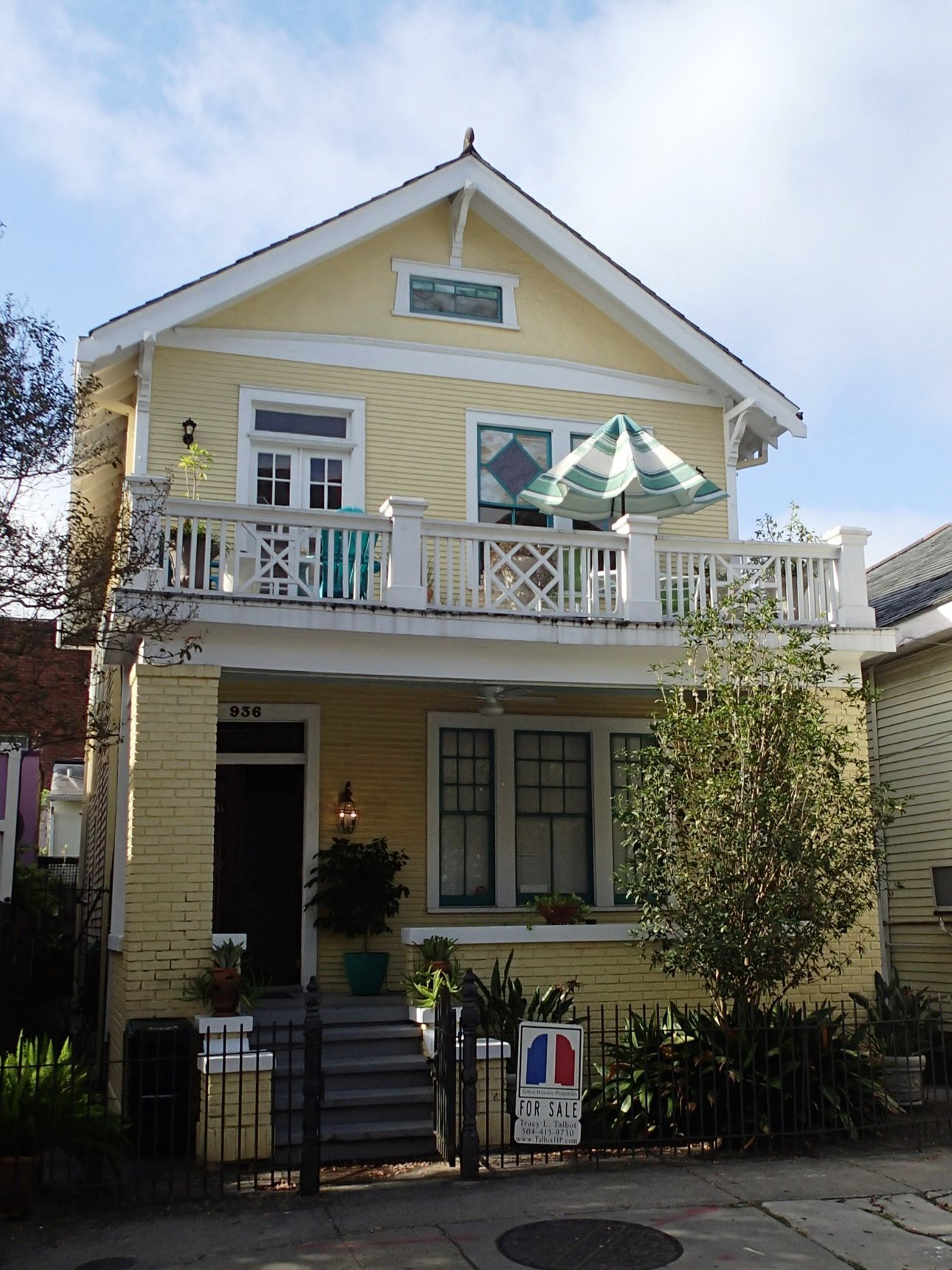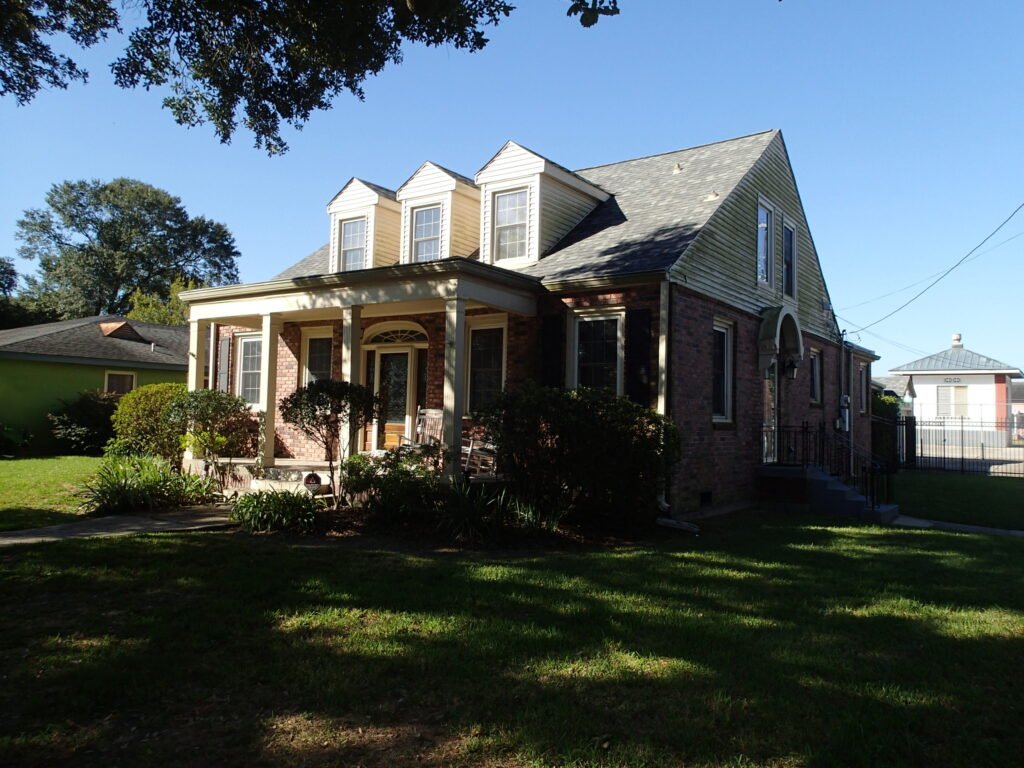
A New Orleans Inspector’s Findings
As a home inspector serving the New Orleans area, I’ve seen my share of structural issues—but a recent inspection revealed a perfect storm of foundation problems that every homeowner should understand. What appeared to be a beautiful brick home from the street was actually struggling under the weight of multiple structural failures, each one compounding the others.
The Warning Signs: What We Found
During this particular inspection, the home showed several telltale signs that something was seriously wrong. Visible cracks ran vertically along the exterior brick veneer, and similar fractures appeared on interior walls. While cracks can sometimes be cosmetic, these patterns told a different story—one of genuine structural distress.
When I crawled beneath the home, the real problems became apparent.
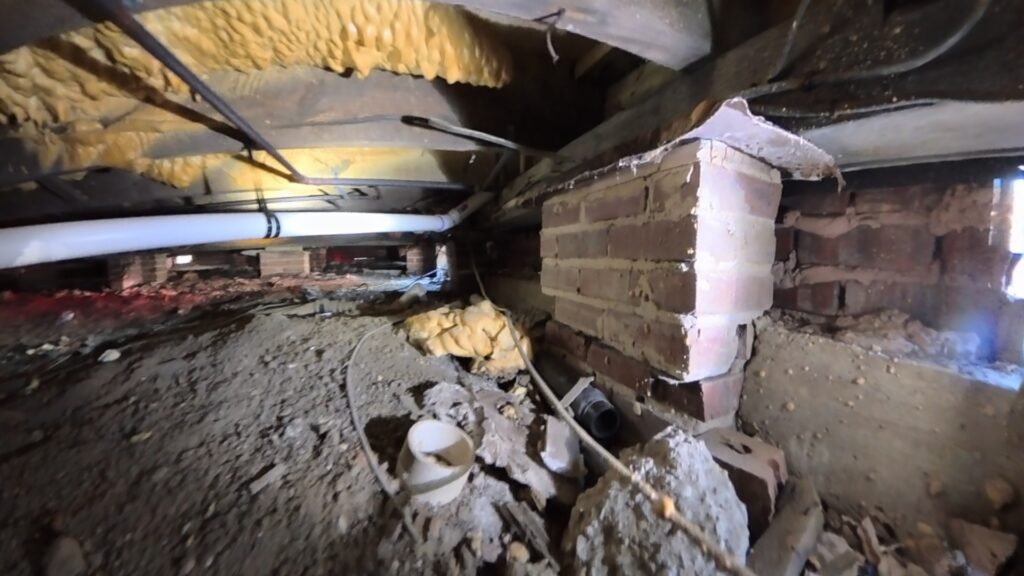
Failing Foundation Piers: The Critical Weakness
The brick pier and beam foundation, common in many New Orleans homes built on our challenging soil, was in severe distress. Several brick piers were leaning at dangerous angles, their mortar deteriorated and crumbling. One pier showed extensive damage with bricks literally falling away from the structure, leaving exposed metal support beams above with nothing solid beneath them.
This type of deterioration doesn’t happen overnight. Years of moisture exposure, our area’s expansive clay soils, and possibly poor original construction had taken their toll. When foundation piers fail, the entire weight of the home shifts to the remaining supports—creating a cascading failure that only gets worse with time.
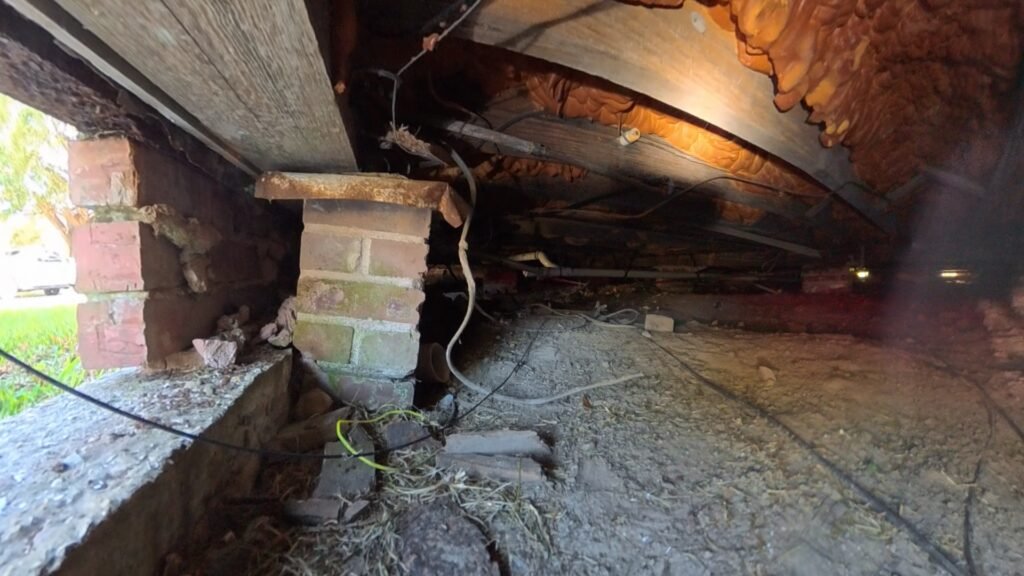
The Plumbing Problem: Water as the Silent Destroyer
On the opposite side of the crawl space, I discovered evidence of significant plumbing issues. Water damage and soil erosion beneath the foundation indicated an ongoing leak that had been undermining the soil support for months or possibly years. In New Orleans, where we already deal with high water tables and saturated ground conditions, plumbing leaks beneath a home can be catastrophic.
The undermined soil removes the stable base that foundation piers need. As the ground washes away, piers settle unevenly, creating the same structural stress and cracking we were seeing throughout the home.

The Unauthorized Modification: A Load-Bearing Wall Removed
Perhaps the most concerning discovery was evidence of an unauthorized structural modification. At some point, a previous or current homeowner had removed an interior wall—likely to create more open living space in what appeared to be the dining area. This sounds like a common renovation, but there was one critical problem: no support beam had been installed to carry the load from the bedroom above.
When you remove a load-bearing wall, the weight that wall supported doesn’t disappear—it has to go somewhere. Without a proper beam to distribute that load to adjacent walls or posts, the ceiling begins to sag, floor joists stress, and the entire structural system starts to fail. The ceiling distortion visible in the interior photos confirmed that this unsupported span was actively causing structural damage.
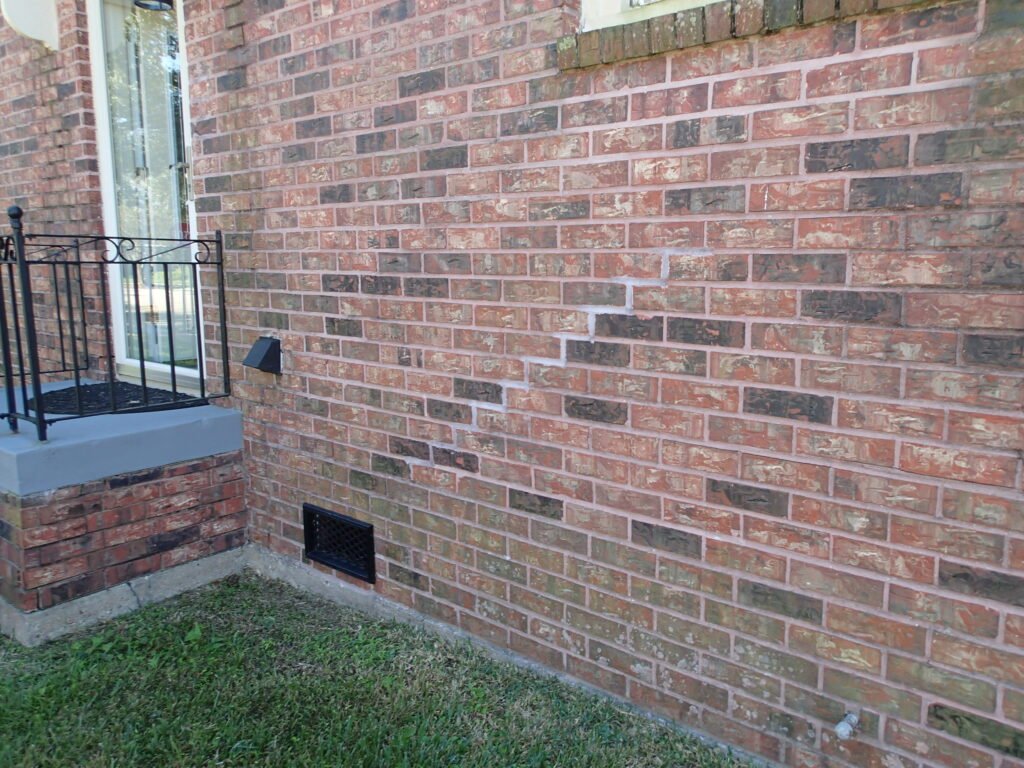
The Interconnected Nature of Structural Problems
What makes this case particularly instructive is how these three issues worked together to compromise the home’s integrity:
Foundation pier failure caused differential settlement, creating stress throughout the frame. Plumbing leaks undermined soil support, accelerating pier failure and creating more settlement. The removed load-bearing wall concentrated weight onto an already compromised foundation system, making everything worse.
Each problem alone would require immediate attention. Together, they represent a significant structural emergency that threatens the home’s safety and habitability.
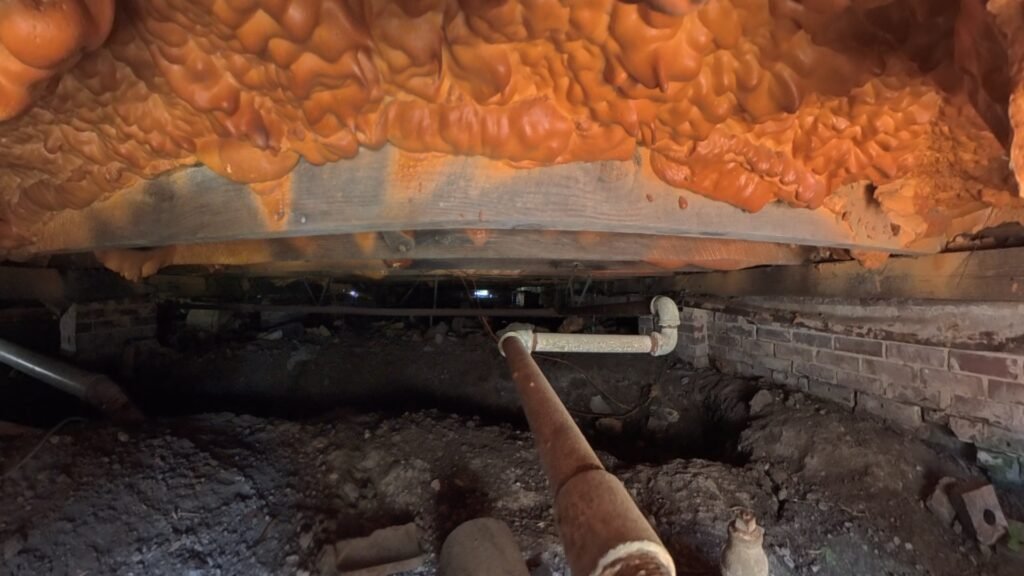
Why This Matters for New Orleans Homeowners
Our local conditions make structural vigilance especially important. New Orleans homes face unique challenges including expansive clay soils that shift with moisture changes, high humidity that accelerates wood rot and mortar deterioration, a high water table that increases hydrostatic pressure, and historic homes with pier and beam foundations that require regular maintenance.
Many of these problems develop slowly over years, hidden beneath the home where homeowners never look. By the time visible symptoms appear inside the house—cracks, sticking doors, sloping floors—the damage may already be extensive.
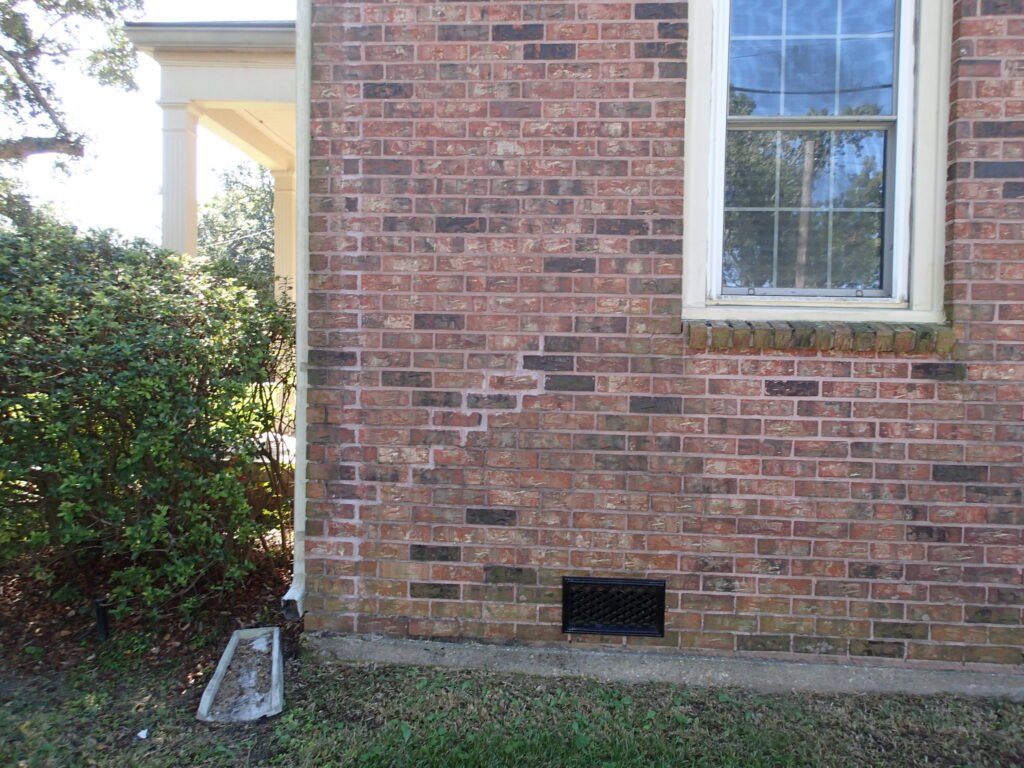
What Should You Do?
If you’re buying a home in the New Orleans area, a thorough inspection of the foundation and crawl space is essential. Don’t skip this even if the home looks perfect from street level. If you’re a current homeowner, watch for warning signs like new or expanding cracks in walls or brick, doors or windows that suddenly stick or won’t close properly, visible sloping or sagging in floors, separation between walls and ceilings or floors, or evidence of water beneath the home.
Most importantly, never remove a wall without consulting a structural engineer. What seems like a simple renovation can have devastating consequences if that wall is bearing structural load.
The Bottom Line
This inspection revealed what I always tell my clients: the most expensive problems are the ones you can’t see from the curb. A beautiful exterior can hide serious structural deficiencies that threaten both your safety and your investment.
The good news is that structural problems, even serious ones, can usually be repaired—if they’re caught in time. Foundation piers can be replaced or reinforced, plumbing issues can be corrected and the resulting damage repaired, and support beams can be installed to carry loads properly.
But all of this requires professional assessment and repair. This particular home will need a structural engineer’s evaluation, foundation repair specialists, licensed plumbers to address the water intrusion, and likely, contractor work to install proper structural support where the wall was removed.
If you’re considering purchasing a home in the New Orleans area, or if you’ve noticed any warning signs in your current home, don’t wait. The longer structural problems go unaddressed, the more expensive and dangerous they become.
Protecting New Orleans homeowners through thorough, honest inspections. If you have questions about your home’s foundation or need a pre-purchase inspection, contact us today.

